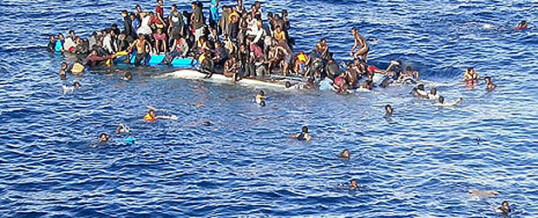
McLeod Group Blog by Hunter McGill, July 5, 2016
The government’s current consultation process on international assistance includes several questions about humanitarian (emergency) assistance. There is no denying that there is a pressing need for humanitarian aid in many parts of the world, with estimates of populations at risk and in need of help running as high as 125 million. The total budget for humanitarian assistance in 2015 reached US$25 billion. So it is no surprise that over 9000 participants attended the first World Humanitarian Summit in Istanbul, on May 23-24, to discuss funding and operational issues associated with this global enterprise. It was perhaps fitting that Turkey was the setting for the meeting as that country is hosting an estimated three million refugees, most driven from their homes by conflict in the Middle East.
The principal issue for the summit was the $15 billion gap in 2015 between identified needs and funds available, despite a 700% increase in humanitarian budgets since 2000. Other subjects dealt with—but with very mixed results—included operational efficiencies to be found in the system, more funding to be channelled through local response organizations, greater transparency in reporting on humanitarian response, and much better links between relief and development in order to assist in recovery from disaster.
There was no official recognition of Médecins sans Frontières’s accusation that the event was merely a fig leaf of good intentions in the face of daily evidence of violations of international humanitarian law and refugee rights.
Germany was the only G-7 country whose delegation was led by its head of government, Angela Merkel. Canada was represented by the Minister of International Development, Marie-Claude Bibeau. In Istanbul the Minister announced $331 million in funding for a range of humanitarian agencies and emphasized, as she often does, priority to women and girls in emergency response. From a funding perspective Canada has been a significant and reliable partner in recent years, with expenditures on humanitarian assistance rising from $100 million in 2002 to almost $700 million in 2014 (17% of our total official aid).
The question now is: What next? The major donors, Canada included, agreed to a ‘Grand Bargain’ to improve humanitarian financing, but without specific time-bound commitments. The UN’s Central Emergency Relief Fund (CERF) is to rise to $1 billion per year, which should give greater flexibility and improved timeliness to UN humanitarian agencies. Much more financing (25%) is to go directly to local non-governmental agencies by 2020, but they will still be subcontractors to the current big operational organizations such as the World Food Programme, the UN High Commissioner’s Program for Refugees and UNICEF. Also set for 2020 is a target of 30% of donor humanitarian funding to be un-earmarked, that is to say not tied by donors to a use of their own choosing. But this is an aspirational goal with no compliance mechanism. And it is hardly new, having been discussed at least since 2003. Finally, when it comes to bridging the gap between relief, recovery and development in ways that will reduce humanitarian needs, the summit’s final document used very general wording without any specific targets or actions.
In this context, does more spent on humanitarian aid mean less for development, which, if properly done, reduces vulnerability and builds resilience? As Canada’s official development assistance budget rises in future years, the volume of humanitarian aid could remain at current levels with growth going to development programs.
The amount of Canadian financing for humanitarian aid is impressive, but in the absence of a published strategy for our international humanitarian work it is not clear where our priorities lie. The current international assistance review should produce a clear statement of the objectives Canada supports in humanitarian aid and identify those issues discussed at Istanbul where we can lead.
This statement should also set out the role we see for the multilateral agencies and non-governmental organizations that deliver emergency aid. On the list of issues could be action—not just pledges—to transparency on where we spend our humanitarian budget, a specific target for multi-year funding for complex (i.e., conflict-related), long-duration crises, and leadership among donors in financing for local humanitarian response organizations
Perhaps most importantly Canada should play a role in seeking political solutions to the causes of conflicts which generate so much misery and suffering and drive humanitarian budgets ever upward. The humanitarian crisis in South Sudan, for example, receives little attention in the West, but has resulted in over 1.6 million internally displaced people, 700,000 refugees and 5.1 million persons in need of assistance in 2016. The UN system requested $1.29 billion for humanitarian assistance for 2016; as of June, only $400 million or 31% had been received.
If Canada is indeed back, let’s show our engagement by taking leadership in reducing vulnerability to humanitarian crises for the most vulnerable people in the world.
See also the McLeod Group policy brief on Canada’s Humanitarian Assistance.
